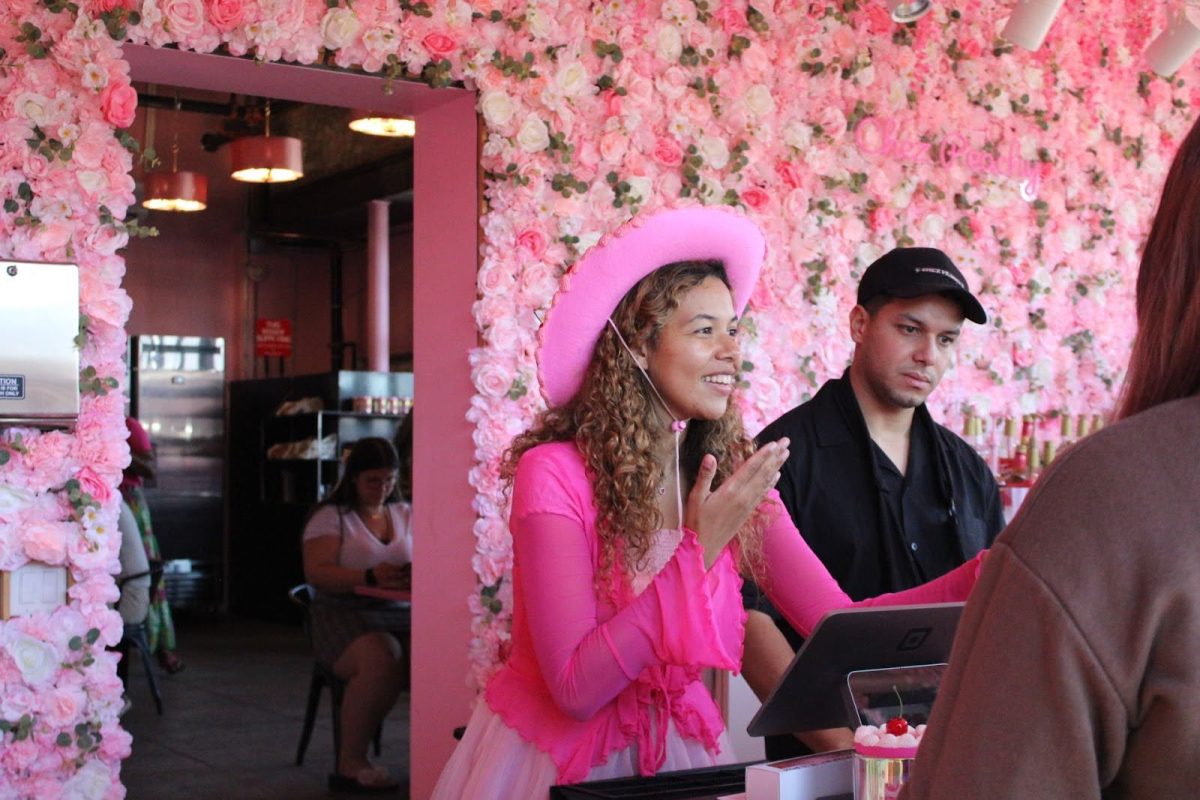Ask public health senior Walida Murray if the prices at the Student Union Memorial Center are too expensive, and she’s quick to say yes.
Murray, who says she dropped the meal plan because of the expensive prices, compared the Arizona Student Unions to off-campus venues.
“”I understand that they have to pay for everything in this building,”” she says, gesturing to the student union’s gleaming facilities, “”but the prices are just too expensive.””
With prices steadily increasing, Murray certainly isn’t alone in her
Much of the anger students direct at the student unions is misplaced.
dissatisfaction. What’s interesting, though, is that much of the anger students direct at the student unions seems misplaced.
Sure, there have been some ideas that deserved to be scrapped (the ill-conceived mandatory meal plan, for one), but if you talk to the brass, it becomes rather obvious that the student unions are more student-oriented than you would think.
I sat down with David Galbraith, the straight-talking director of the UA’s Dining Services, to talk about the student unions. Here’s what he had to say about some of the “”myths”” on campus:
Myth No. 1: The student unions aren’t a successful business. Depends what you’re using to measure “”success.”” But if you look at foot traffic, total transactions, and total revenue, the student unions aren’t too shabby.
The student unions see anywhere between 35,000 and 70,000 people coming through their doors a day (almost four times the number of people who visit peer institute University of Washington’s student union). Upwards of 800 employees ring up 30,000 transactions daily, and revenue totaled about $18 million last year.
Of course, this isn’t to say that the Arizona Student Unions aren’t in serious financial trouble. They’re charged with supporting the Center for Student Involvement and Leadership in addition to servicing their mounting debt obligations from the original construction costs.
Even so, much of the student unions have been more or less self-sufficient until now, and they’re desperately in need of dollars from the one reservoir they haven’t yet tapped: the state.
Myth No. 2: The student unions don’t respond to student needs. Not quite. The placement of some of the less popular restaurants like Chick-Fil-A might seem strange, but the decision actually dates back to student surveys that were sent out before the new SUMC was even built.
But that doesn’t mean that decisions made years ago are permanent. The lease for McDonald’s is up this summer, and Dining Services is already shopping around to see if another burger company wants to fill the spot (Galbraith considered it “”pretty much a reality”” that there has to be a burger joint on campus).
The process is already under way, and student input is huge. Would you prefer Carl’s Jr. to McDonald’s or Burger King? How about In-N-Out Burger? Both are on the list of companies Galbraith has contacted, but it’s the student dollars that will drive the business, so make your opinions known before it’s too late.
Myth No. 3: The student unions are needlessly expensive. Not quite. Large grocers like Safeway are able to offer cheaper prices, but Safeway took in $35.8 billion in the U.S. and Canada alone last year. Its buying power easily surpasses any kind of monetary muscle that UA could hope to muster.
What’s more, Galbraith pointed out that the student unions aren’t solely in the business of making big profits. Instead, the student unions hire full-time, benefits-eligible employees from the Tucson community and work to give them a leg-up, despite the fact that it will mean higher operating costs.
Whatever the financial downsides, Galbraith is proud of the results.
“”We get them benefits, we get them into language classes, and they work to get the education they need to break the cycle (of poverty),”” he said of the employees, noting that their children are eligible for tuition waivers.
Pam Lochrey, an employee who has worked for the student unions since 1989, agreed that the benefits are good. But, she conceded, “”The living wage is enough to live on, but not live well.””
To be sure, the student unions have some serious problems. They can’t continue to draw on their dwindling reserves without support from the state, but the solutions are familiar enough. The student unions need (and deserve) increased state funding. For students, though, it’s time to get away from the myths, drop the victim act and get involved.
Here’s to hoping that the prospect of an In-N-Out Burger will do just that.
Damion LeeNatali is a senior majoring in political science and history. He can be reached at letters@wildcat.arizona.edu








